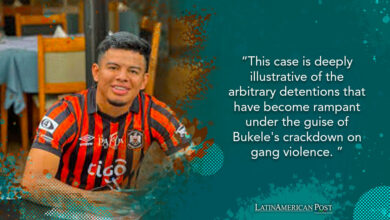Arhuaca Community: the struggle for indigenous conservation
Listen this article
The Arhuaca indigenous community has gone through different processes of resistance to preserve and recover its territory and its borders with society

Located in the Sierra Nevada de Santa Marta, this community has had to adapt to the ways of life of the non-indigenous society. This has largely compromised the loss of cultural identity, sovereignty, and territorial integrity, their own justice, and ancestral authority.
Leer en español: Comunidad Arhuaca: la lucha por la conservación indígena
The Sierra Nevada is delimited by the Black Line, which defines the ancestral territory for the Kogui, Wiwa, Kankuamo and Arhuaco peoples and is known as the boundary drawn before there is light. Within this Black Line are the sacred sites, which are identified as spaces located in different areas of the indigenous territory, each one of them symbolically articulates the diverse aspects of the environmental, cultural, political, social and economic life of the Sierra Nevada and its communities.
Additionally, the geological and soil factors and the composition of fauna and flora present in the Sierra Nevada converge in very particular ecosystems that provide multiple services to indigenous peoples and large surrounding cities.
The Arhuaco Indians, unlike the Westerners, have a worldview, an ancestral and spiritual conception in relation to their territories, which answers to a millenary culture where their identity, wisdom, knowledge about the different dynamics of the ecosystem, techniques are invoked for the use of soil, water, plants, and animals. Thus, the territory is not reduced only to the physical dimension, to its natural resources and to an extension of inhabited land that has been demarcated by political borders, but also to the importance of its meaning as a sacred means of subsistence.
In this logic, sacred places can be both tangible and intangible and are considered centers of world order and cosmology. For the Mamos, these places are strategic biological points that serve to balance the different ecosystems and also as important spaces for reflection on the sensible world and the properties of nature.
Read also: 'Rezo del Pescado': a ritual for the man-nature connection
Thus, it can be highlighted that the claims about territorial control are not only political and economic but also spiritual. The Sierra Nevada is seen as Seinekun's own body and, therefore, the feminine side of La Madre. In it, there are the shishi and punkusa books, which contain the law, rules, and functions of each of the species. Likewise, they establish the forms by which the Fathers are paid (payments and taxes).
However, due to its geographical and climatic characteristics, and the settlement of indigenous peoples, the Sierra Nevada de Santa Marta represents an important attraction for investors interested in ecotourism, ethnotourism and the development of megaprojects.
Unfortunately, these activities, in addition to having environmental repercussions, ignore the existence of sacred sites, destroy them or build them, affecting the cultural and social processes of indigenous peoples, undermining the possibilities of the permanence of their culture and transmission of traditional knowledge. In addition, it ends up constituting a model of violation of territorial rights and autonomy, and of the ancestral relationship that indigenous communities have with their territories.
In this way, for the Arhuacos, the development of these projects by the non-indigenous population not only constitutes a violation of their sacred places but also a natural imbalance of the knowledge and government system.
This shows that the non-indigenous population lacks awareness of the importance of these territories, since they are only seen as a resource to obtain money without understanding or respecting the worldview that indigenous peoples have regarding their territory, since for them the territory is not summarized in "a piece of land" but is "the mother" that gave them life and enables them to survive as an indigenous group.
LatinAmerican Post | María Alejandra Triviño
Translated from "Comunidada Arhuaca: la lucha por la conservación indígena"





